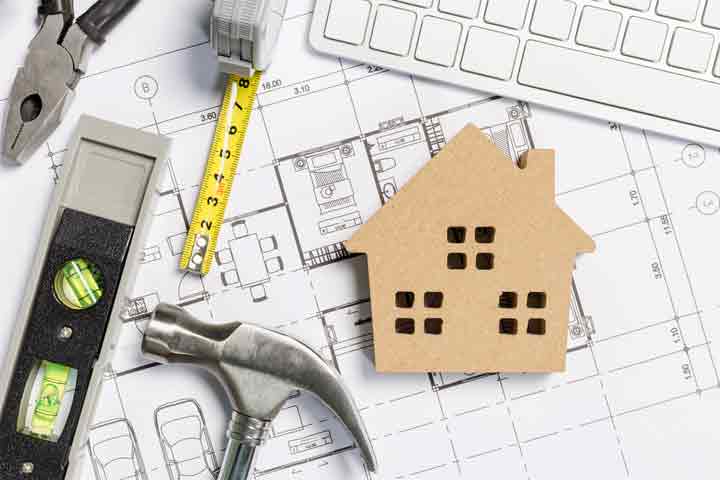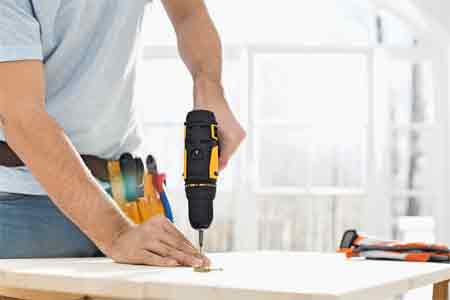Energy Saving Home Improvement Projects

Homeowners looking to increase their property value and save money on their monthly energy bills should consider one or more of the following energy saving home improvement projects. Some projects may even be eligible for current energy tax credits.
Air Sealing
Air sealing can be one of the easiest energy saving home improvement projects. The purpose of air sealing is to reduce the amount of air flowing into, or out of, a home in order to keep conditioned air inside and prevent drafts. Air sealing involves caulking, sealing, and weather stripping.
To determine if a window or door needs sealing, hold a lit candle near the edges of the closed window or door on a windy day. If the flame shifts or flickers, it probably needs to be sealed.
Most caulking and sealing jobs can be done by any homeowner, but if you have questions then be sure to contact a professional.
Attic Insulation

A home’s attic serves a critical role in heating and cooling the home. If insulation between interior spaces and the attic is not adequate, heat will easily enter or leave the home through the ceiling. To reduce heat loss through the attic, install attic insulation.
The rating used for determining how much insulation exists, or is needed, is called R-value. (What is R-Value?) Suggested R-values range from 30-60 and depend on an area’s climate. To find out which R-values are recommended for your area, visit the U.S. Department of Energy’s Energy Savers insulation website.
Duct Sealing
Ducts are used to distribute conditioned air throughout a home. If the ducts are leaking, they may be releasing conditioned air into the attic, basement, or other areas where it will be wasted.
Determining if ducts are leaking can be somewhat tricky. Contact a professional heating or air conditioning system contractor to determine if duct sealing will be a good energy saving home improvement project for your home.
Wall Insulation
Wall insulation keeps heat from entering or leaving interior spaces through walls. Increasing a wall’s R-value often involves adding additional layers of insulation to the wall. That said, an added benefit of increased wall insulation is a reduction of noise coming into the house from the outside environment.
Wall insulation projects, while great for saving energy, can be quite intensive. Contact a qualified professional to see if this type of energy saving home improvement project is right for you.
Crawl Space and Basement Insulation
Do your feet ever get cold when walking in the lowest level of your home? If so, then crawl space or basement insulation may be a good energy saving home improvement project for your home.
Many people don’t consider how much heat their home may be losing through their basement or crawl space. This type of heat loss can account for a significant part of a home’s energy bill. Insulating the crawl space or basement can keep cold air from rising up through floors into the home. You just may finally be able to say “so long” to cold feet in the winter time.
Window Replacement
If your home doesn’t yet have energy saving windows, now may be the time. With windows being one of the biggest causes of heat loss in a home, energy saving windows usually pay for themselves within a year or two.
When shopping for windows, look for double or triple pane windows with high R-values. Installation may be complicated, so consider having a professional window installer install them for you.
There are numerous incentives available to help homeowners looking to replace windows in their home. For more information on current energy tax credits, read Energy Tax Credits.

Door and Skylight Replacement
If you have thin doors or single-pane skylights, you may want to consider replacing them. Older doors and skylights often are not very efficient and allow a large amount of heat to transfer through to the exterior environment.
Skylights, in particular, can waste tremendous amounts of energy because they are often located where the warmest air in the house gathers, at the ceiling.
Contact a qualified professional to see if replacing skylights and doors may be a good energy saving home improvement project for your home.
Heating or Cooling System Replacement or Upgrade
If your heating or cooling systems are more than ten years old, they may be inefficient and wasting energy. New models, especially those awarded the energy star, can save a significant amount of energy when compared to existing systems.
Contact a certified heating or cooling professional to see if replacing your system would be a good energy saving home improvement project for your home.
Water Heater Replacement
According to the U.S. Department of Energy, the average home uses 12% of its energy consumption just for heating water. With all that money being spent on hot water, homeowners should strive to install only energy efficient hot water heaters.
When shopping for a hot water heater, look for the energy star which indicates the system is more efficient than most other models available.
An easy project any homeowner can do is to install a hot water heater blanket around their water heater. Water heater blankets are designed to add insulation and help keep heat in the water heater, where it belongs.
Storm Window or Door Installation
Storm windows and doors help block out drafts while also adding a layer of insulating air between existing windows or doors and the cold outdoors. Storm windows typically take the place of existing screens, while storm doors will go where existing screen doors are. Installing a storm window or door can be quite easy and can save you a lot on your energy bill.
Window Film Installation
Window film blocks out the sun’s heating rays in summertime while still allowing light into the home. Window film is only advised for hot climates where air conditioning is used regularly. Also, keep in mind that most window film blocks out ultraviolet (UV) rays. That’s good for protecting household items from “bleaching” which can happen from too much exposure to UV rays, but houseplants will not be able to grow without UV light. For easy ways to save energy around the home, listen to Ten Energy Saving Tips for The Home, or read Ten Energy Saving Tips for Renters.
